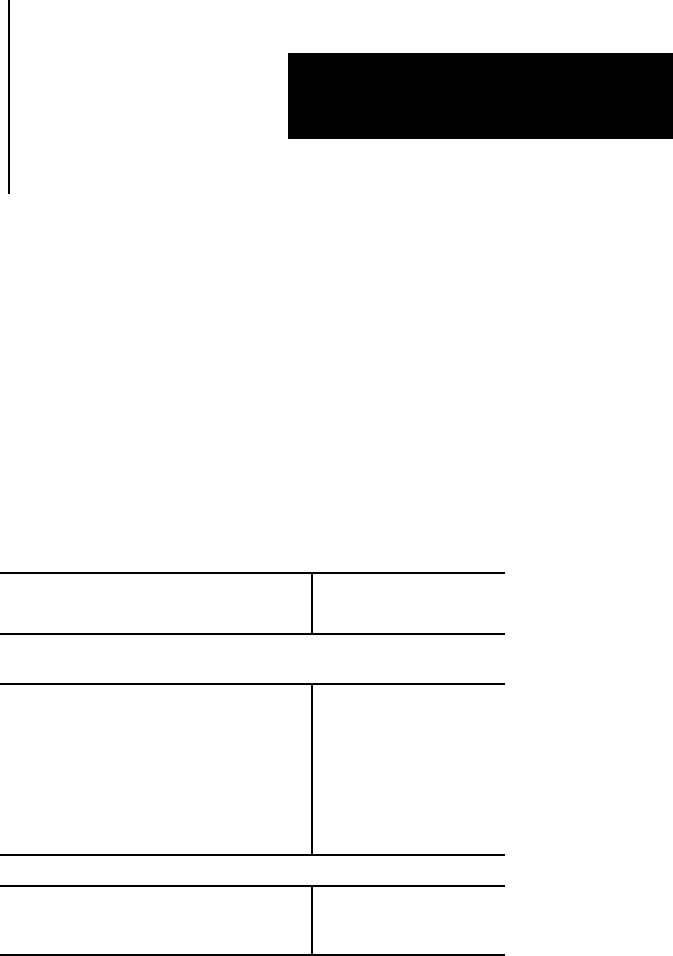User Manual Owner's manual
Table Of Contents
- 1772-6.5.8, Mini-PLC-2/02, -2/16, -2/17 Processor, User Manual
- Important User Information
- Summary of Changes
- Table of Contents
- 1 - Using This Manual
- 2 - Fundamentals of a Programmable Controller
- 3 - Hardware Features
- 4 - Installing Your Programmable Controller
- 5 - Starting Your Processor
- 6 - Maintaining and Troubleshooting Your Processor
- 7 - Memory Organization
- 8 - Scan Theory
- 9 - Relay-Like Instructions
- 10 - Program Control Instructions
- 11 - Timers and Counters
- 12 - Data Manipulation and Compare Instructions
- 13 - Three-Digit Math Instructions
- 14 - EAF Math Instructions
- 15 - EAF Log, Trig, and FIFO Instructions
- 16 - EAF Process Control Instructions
- 17 - Jump Instructions and Subroutines
- 18 - Block Transfer
- 19 - Data Transfer Instructions
- 20 - Bit Shift Registers
- 21 - Sequencers
- 22 - Selectable Timer Interrupts
- 23 - Report Generation
- 24 - Program Editing
- 25 - Programming Techniques
- 26 - Program Troubleshooting
- A - Specifications
- B - Processor Comparison Chart
- C - Number Systems
- D - Glossary
- E - Quick Reference
- Index
- Back Cover

Chapter
14
14-1
EAF Math Instructions
This chapter describes the EAF (Execute Auxiliary Function) math
instructions. Table 14.A lists these instructions.
Table 14.A
EAF Function Numbers
If you want to perform
an operation of this type
Use this
function number
The MiniPLC2/02, MiniPLC2/16, and MiniPLC2/17 can perform
these functions.
Addition
Subtraction
Multiplication
Division
Square Root
BCD to Binary
Binary to BCD
10
x
(01)
(02)
(03)
(04)
(05)
(13)
(14)
(37)
The MiniPLC2/17 can perform these additional functions.
Y to the X (y
+/-x)
Powers of e (e
+/-x)
Reciprocal (1/x)
(33)
(32)
(34)
When a processor executes an EAF, it uses the data table format shown in
Figure 14.1. Operands A and B represent the numbers you manipulate.
Chapter Objectives
Two Operand EAFs










